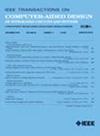共享资源的多线程 ROS 2 执行器的动态优先级调度
IF 2.7
3区 计算机科学
Q2 COMPUTER SCIENCE, HARDWARE & ARCHITECTURE
IEEE Transactions on Computer-Aided Design of Integrated Circuits and Systems
Pub Date : 2024-11-06
DOI:10.1109/TCAD.2024.3445259
引用次数: 0
摘要
第二代机器人操作系统(ROS 2)受到了实时系统研究界的极大关注,主要目的是提供正式建模和时序分析。ROS 2 默认的独特调度策略极大地影响了响应时间和工作负载调度的接受率。这也使得实时系统界现有的与非抢占式(和有限抢占式)调度问题相关的丰富成果无法适用于 ROS 2 的可调度性分析。本文旨在为 ROS 2 设计、实现和分析一个标准的基于优先级的动态实时调度程序,同时处理共享资源。具体来说,我们建议用 readyQueue 代替 readySet,后者效率更高,而且在回调选择、队列更新和跳转方案方面也有改进,可避免资源共享造成的优先级倒置。这种新颖的 ROS 2 执行器设计还可用于固定优先级策略和混合策略调度器的高效实现。我们修改后的执行器与默认的 ROS 2 架构保持兼容。我们进一步确定并建立了通过全局最早截止时间优先(GEDF)算法调度有限赎回点任务与不共享资源的 ROS 2 处理链调度之间的联系。在此基础上,我们正式捕获了最坏情况下的阻塞时间,从而为具有共享资源的 ROS 2 处理链开发了响应时间分析。我们通过实施修改后的调度器来评估我们的调度器,该调度器接受来自 ROS 2 系统设计者的调度参数。我们进行了两个案例研究--一个使用真实的 ROS 2 节点来驱动一辆小型地面车辆,另一个使用合成任务。第二个案例研究确定了修改后的执行器可防止优先级倒置的情况。我们还用随机生成的工作负载测试了我们的分析。在测试中,我们修改后的调度程序比 ROS 2 默认的调度程序表现更好。我们的代码可在线获取:https://github.com/RTIS-Lab/ROS-Dynamic-Executor。本文章由计算机程序翻译,如有差异,请以英文原文为准。
Dynamic Priority Scheduling of Multithreaded ROS 2 Executor With Shared Resources
The second generation of robot operating system (ROS 2) received significant attention from the real-time system research community, mostly aiming at providing formal modeling and timing analysis. However, most of the current efforts are limited to the default scheduling design schemes of ROS 2. The unique scheduling policies maintained by default ROS 2 significantly affect the response time and acceptance rate of workload schedulability. It also invalidates the adaptation of the rich existing results related to nonpreemptive (and limited-preemptive) scheduling problems in the real-time systems community to ROS 2 schedulability analysis. This article aims to design, implement, and analyze a standard dynamic priority-based real-time scheduler for ROS 2 while handling shared resources. Specifically, we propose to replace the readySet with a readyQueue, which is much more efficient and comes with improvements for callback selection, queue updating, and a skipping scheme to avoid priority inversion from resource sharing. Such a novel ROS 2 executor design can also be used for efficient implementations of fixed priority policies and mixed-policy schedulers. Our modified executor maintains the compatibility with default ROS 2 architecture. We further identified and built a link between the scheduling of limited-preemption points tasks via the global earliest deadline first (GEDF) algorithm and ROS 2 processing chain scheduling without shared resources. Based on this, we formally capture the worst-case blocking time and thereby develop a response time analysis for ROS 2 processing chains with shared resources. We evaluate our scheduler by implementing our modified scheduler that accepts scheduling parameters from the system designer in ROS 2. We ran two case studies-one using real ROS 2 nodes to drive a small ground vehicle, and one using synthetic tasks. The second case study identifies a case where the modified executor prevents priority inversion. We also test our analysis with randomly generated workloads. In our tests, our modified scheduler performed better than the ROS 2 default. Our code is available online:
https://github.com/RTIS-Lab/ROS-Dynamic-Executor
.
求助全文
通过发布文献求助,成功后即可免费获取论文全文。
去求助
来源期刊
CiteScore
5.60
自引率
13.80%
发文量
500
审稿时长
7 months
期刊介绍:
The purpose of this Transactions is to publish papers of interest to individuals in the area of computer-aided design of integrated circuits and systems composed of analog, digital, mixed-signal, optical, or microwave components. The aids include methods, models, algorithms, and man-machine interfaces for system-level, physical and logical design including: planning, synthesis, partitioning, modeling, simulation, layout, verification, testing, hardware-software co-design and documentation of integrated circuit and system designs of all complexities. Design tools and techniques for evaluating and designing integrated circuits and systems for metrics such as performance, power, reliability, testability, and security are a focus.

 求助内容:
求助内容: 应助结果提醒方式:
应助结果提醒方式:


